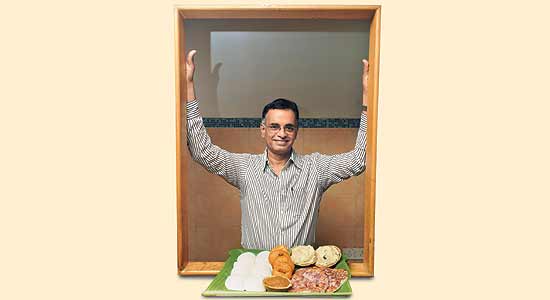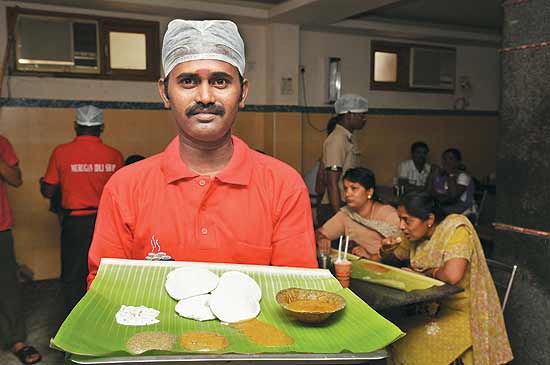
Source :The Hindu:Namitha Jain :Oct 2,2011
Here are some simple ways to help the body get rid of waste
“I feel stuffed, gassy and clogged up. Why am I so constipated?”
It's not much of a consolation, but constipation is a common problem.
It can be a tough condition to deal with, but deal with it you must. Here are some tried and tested ways to combat constipation and alleviate your symptoms.
1. Eat fibre
Fibre adds bulk to the food and is an all-important source of roughage. The roughage component in fibre aids the digestive system, helping the body's elimination process, and is, therefore, referred to as “nature's broom”!
The National Cancer Institute of America recommends a daily intake of between 20 to 35 grams of fibre-rich foods. Dietary fibre is found in fruits, vegetables, sprouts, beans, legumes, flax, whole grain cereals, nuts and seeds.
2. Drink water
Water regulates body temperature, assists the digestive system, transports nutrients and eliminates waste from the body. On an average one needs 8 to 12 glasses of water every day.
3. Indulge wisely
When you are in a mood to indulge — cut back on quantities and savour the food in small portions. This is far better than going on an all-out binge which can cause indigestion.
4. Avoid large meals
Big meals are hard to digest and can make you feel sleepy. When you consume six to eight small, healthy meals every day, your body needs more calories to break down the food, thereby helping to raise your body metabolism.
5. Sit down and eat slowly; chew well
It's easy to overeat when meals are grabbed on the run, or while standing in front of the refrigerator. Eat slowly and chew well to give your body time to release the enzymes that tell your brain you've had enough.
6. Try reflexology
Try a simple reflexology treatment at home. Ask your spouse or a friend to massage the arches of your feet (these are the parts which correspond to the foot reflexology zones for the digestive system) in a circular, clockwise motion, for about five minutes on each foot.
7. Watch the clock!
The later you eat, the harder it gets to digest the food. If you have to have a late dinner, eat a small snack in advance, that way you won't be ravenous at dinner time. Give yourself two or three hours to digest any meal before going to bed.
8. Don't overeat if you are stressed out
Avoid eating as an antidote to emotional pain. Whether it is alcohol or food, excess of any kind leads to digestion problems and weight gain.
9. Eat nutritious foods
Choose whole, organic items rather than refined, processed foods that are full of additives. To preserve nutrients, eat freshly cooked food, rather than packaged foods.
10. Exercise regularly
An active body = active bowel movements.
Remember my mantra — Exercise! Exercise! Exercise!
Walking, swimming, cycling on a stationary bike and yoga can all help ease constipation and leave you feeling more fit and healthy.
Two Super Foods That Assist Digestion Mint
Mint is used as a treatment for indigestion, colic, heartburn and flatulence. It also can stimulate the appetite and cure nausea and headaches.
Figs, prunes and raisins These improve digestion and functioning of the stomach, spleen-pancreas and large intestine. Rich in iron and calcium, they also improve blood quality and build strong bones.
Tip: Soak figs, prunes or raisins in warm water for 10 minutes before consuming, to make them easier to digest.
“When is constipation serious?”
For most people it's more of an inconvenience than a major problem, but if it persists, consult your doctor. Sometimes, constipation can lead to haemorrhoids or piles that can be extremely uncomfortable, but is treatable.
Haemorrhoids are varicose veins that sit just inside or outside the anal opening. These swollen enlarged vessels lie just under the surface of the skin and can lead to irritation of the skin and occasionally, bleeding with bowel movements. Rectal bleeding should always be evaluated by your doctor.
Here are some tips to reduce problems from haemorrhoids:
* Avoid getting constipated. Try not to push or strain when you are having a bowel movement.
* Keep your feet elevated on a stool to enable easier bowel movement
* Use a doughnut shaped pillow to ease pressure on your rear.
* Sleep on your side, instead of your back, to take the pressure off.
The writer is a certified Clinical Exercise Specialist, Lifestyle and Weight Management Specialist.
Keywords: Digestive disorders,














